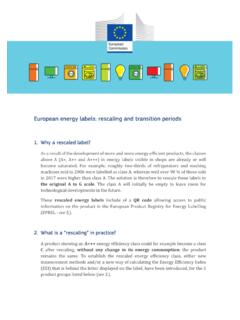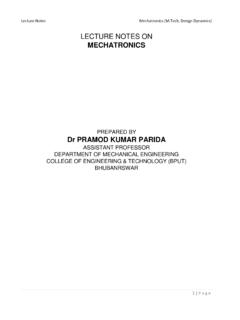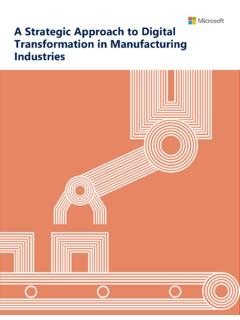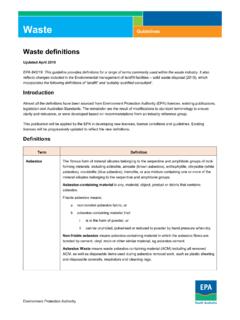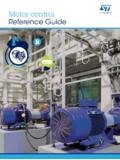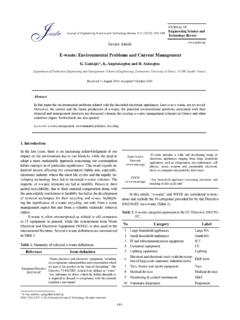Transcription of GREEN BUILDING GUIDE
1 GREEN BUILDING GUIDED esign Techniques, Construction Practices &Materials for Affordable HousingRCACGREEN BUILDING GUIDED esign Techniques, Construction Practices & Materials for Affordable HousingPrincipal AuthorCraig Nielson, LEED APRural Community Assistance CorporationCo-authorsConnie Baker WolfeRural Community Assistance Corporation Dave ConineRural Community Assistance Corporation ContributorArt Seavey Rural Community Assistance CorporationDesignDave ConineSharon WillsRural Community Assistance Corporation Managing Editor and ProductionSharon WillsPublished by Rural Community Assistance Corporation (RCAC), a nonprofit organization dedicated to assisting rural communities achieve their goals and visions by providing training, technical assistance and access to resources.
2 RCAC promotes quality, respect, integrity, cooperation and commitment in our 2009 RCAC. All rights reserved. For reprint permission, please call 916 : The material in this document has been reviewed by RCAC and approved for publication. The views expressed by individual authors, however, are their own and do not necessarily reflect those of RCAC. Trade names, products or services do not convey, and should not be interpreted as conveying, RCAC approval, endorsement or Corporate Office:3120 Freeboard Drive, Suite 201, West Sacramento, California 95691916/447-2854 | 916/447-2878 fax | BUILDING Basics..1-1 Introduction.
3 1-1 GREEN BUILDING Benefits the Environment ..1-1 Going GREEN is Good Business ..1-3 Getting Started with GREEN BUILDING ..1-4 GREEN BUILDING Design..2-6 Design Matters ..2-6 Developing a Successful GREEN Team ..2-6 Design Integration ..2-9 Site Location and Selection ..2-10 Realizing No Cost Measures Through BUILDING Design ..2-14 GREEN BUILDING Blocks ..3-19 Reducing Material Impacts, Increasing Energy Efficiency and Comfort ..3-19 Material Resource Efficiency ..3-19 BUILDING Systems that Reduce Material and Energy Impacts: GREEN Foundations ..3-20 Autoclaved Aerated Concrete (Sidebar) ..3-22 GREEN Floor Framing Systems.
4 3-22 GREEN Wall Systems (Standard Framing Alternatives) ..3-23 Natural BUILDING (Sidebar) ..3-26 GREEN Roofing Systems ..3-26 Raised Heel Truss (Sidebar) ..3-27 GREEN Roofs (Sidebar) ..3-28 GREEN Exterior Finish Materials ..3-29 Cementatious Siding (Sidebar) ..3-29 GREEN Interior Finish Materials ..3-30 GREEN Flooring ..3-32 Controversy Over Cork (Sidebar) ..3-33 GREEN Trim Packages ..3-33 Reducing Energy Use and Increasing Comfort:Insulation ..3-34 Windows and Doors ..3-36 Super Performance Windows (Sidebar) ..3-37 Space and Water Heating ..3-38 Affordable Radiant Heating Systems (Sidebar) ..3-40 The ENERGY STAR Program GREEN Appliances and Lighting.
5 3-41 GREEN Plumbing ..3-42 Renewable Energy ..3-42 BUILDING Integrated Photovoltaic (BIPV) Shingles (Sidebar) ..3-44 Water Conservation ..3-45 Greywater Systems (Sidebar) ..3-46 Improving Indoor Air Quality ..3-47 Table of ContentsRecycled, Salvaged Materials and Waste Management ..3-50 GREEN BUILDING Checklist..4-54 General GUIDE to Greening Affordable Housing Projects ..4-54 GREEN BUILDING Performance Standards ..5-63 Performance Testing ..5-63 Operations, Maintenance and Tenant Education ..5-66 Homeowner Education ..5-67 GREEN BUILDING Resources..6-68 Energy Efficiency ..6-68 BUILDING Systems ..6-69 Foundation Systems.
6 6-69 Wall Systems ..6-70 Windows ..6-70 Composite Decking Materials ..6-70 GREEN BUILDING Material Sourcing ..6-70 General GREEN BUILDING Resources ..6-71 Recycling and Reuse .. 6-72 Renewable Energy ..6-73 National GREEN BUILDING Rating Systems and Programs ..6-74 State GREEN BUILDING Rating Systems ..6-75 GREEN BUILDING Appendices..7-76 Appendix A RCAC Quick GUIDE to Going GREEN ..7-77 Appendix B U .S . Radon Zones ..7-78 Appendix C RCAC GREEN SERVICES ..7-79 Table of Contents (continued)IntroductionGreen BUILDING is a time-tested, practical and intuitive approach to creating environmentally sound buildings.
7 GREEN BUILDING combines age-old wisdom; tradition and collaborative design pro-cesses; and modern BUILDING science, technology and materials application . GREEN BUILDING structures are energy efficient, conserve resources, create healthier indoor environments and offer durable and beautiful spaces that use environmentally suitable materials . GREEN BUILDING incorporates integrated design concepts, solar orientation, appropriate footprint sizing, glazing awareness, material durability, economic life-cycle analysis, mate-rial reuse and salvage, natural material content, locally available materials and economic sustainability.
8 Historically, buildings in the United States were constructed with locally available and generally sustainable materials . These materials were often indigenous to the region and resulted in unique design solutions based on their availability and the climate where the BUILDING was constructed .Today, the typical American home is a collection of materials from every corner of the continent and from suppliers across the globe . GREEN build-ers acknowledge the environmental impacts of materials selected and shipped long distances and make appropriate design choices . GREEN BUILDING Benefits the EnvironmentModern construction causes unwanted environmental im-pacts and limiting these impacts is within the scope of GREEN BUILDING .
9 Perhaps the easiest way to understand GREEN BUILDING is to first consider the various environmental impacts that buildings gen-erate and then consider how negative impacts can be reduced or elimi-nated through more effective planning, design and construction . Modern American buildings impact the environment in the following areas: site selection, materials and resources, energy use and air pollution, water use and quality, and indoor air quality . Site SelectionIn addition to the impacts housing developments have on the environ-ment, project location can have an even greater impact if it is too distant from community services and infrastructure.
10 This is one area of GREEN BUILDING where the larger community context of sustainability (sus-taining natural resources for use by future generations) is particularly GREEN BUILDING Basics11-2 Section OneGreen BUILDING Basicsrelevant . If housing development residents have no choice but to travel long distances by auto-mobile to get the basic goods and services they need, the overall development sustainability, regardless of how GREEN the units themselves are, will be compromised . A GREEN built project should not increase the residents reliance on the automobile .Projects built on productive farmland or sensi-tive natural areas, such as wetlands, wildlife cor-ridors or critical habitats further compromise the community s long-term sustainability.


